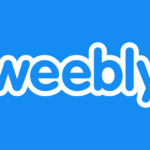Paid advertising is a powerful tool for driving traffic, generating leads, and boosting sales. However, creating effective ad campaigns requires a deep understanding of your audience, ad platforms, and advertising strategies. In this comprehensive guide, we’ll share everything you need to know to create successful paid ad campaigns that drive results.
Understand Your Audience and Goals
The first step in creating effective ad campaigns is to understand your audience and goals. Who are you trying to reach? What do you want them to do after seeing your ad? Understanding your audience and goals will help you create targeted and effective ad campaigns.
Expert Tip: Use tools like Google Analytics or Facebook Insights to understand your audience’s demographics, interests, and behavior. Conduct surveys, focus groups, or customer interviews to gain further insights into their needs and pain points.
Choose the Right Platform and Ad Type
There are many paid advertising platforms and ad types available, each with their own strengths and weaknesses. Some popular options include Google Ads, Facebook Ads, LinkedIn Ads, and Twitter Ads. Choose the platform and ad type that aligns with your audience and goals.
Expert Tip: Use ad research tools like AdEspresso or SEMrush to research and compare different ad types and platforms. These tools can help you identify which platforms and ad types are most popular among your competitors, which can help you make informed decisions about your own campaigns.
Create Compelling Ad Copy and Visuals
Your ad copy and visuals should be compelling and engaging to capture the attention of your audience. Use clear and concise language, and include a strong call-to-action (CTA) to encourage clicks. Use images, videos, or animations to make your ads stand out.
Expert Tip: Use free image and graphic design tools like Canva or Adobe Express to create professional-looking visuals for your ads. Use tools like Grammarly or Hemingway to proofread your ad copy and ensure that it is error-free and easy to read.
Set a Realistic Budget and Bid Strategy
Setting a realistic budget and bid strategy is important for managing your ad spend and maximizing your ROI. Start with a small budget and adjust your bid strategy based on the performance of your ads. Bid high enough to get your ads seen, but not so high that you are overpaying for clicks.
Expert Tip: Use ad management tools like AdRoll or WordStream to optimize your ad campaigns and maximize your ROI. These tools can help you automate your bid strategy, set daily or monthly budgets, and target specific audience segments.
Track and Analyze Your Results
Tracking and analyzing your ad campaign results is essential for improving your performance and ROI. Use analytics tools provided by your advertising platform to track clicks, conversions, and other metrics. Use A/B testing to compare different ad variations and see which ones perform best.
Expert Tip: Use tools like Google Analytics or Kissmetrics to track website traffic and conversions from your ads. Use heat mapping tools like Crazy Egg or Hotjar to analyze user behavior on your landing pages and make improvements that can increase conversions.
Optimize Your Campaigns for Better Performance
Ongoing optimization is key to achieving better ad performance and ROI. Continuously test and refine your ad copy, visuals, targeting, and bidding strategy to see what works best for your audience and goals. Experiment with different ad formats, such as video or carousel ads, to see what resonates with your audience.
Expert Tip: Use machine learning-based ad optimization tools like Adext or Albert to automate your ad optimization process and maximize your performance. These tools can help you find the best-performing ad variations and adjust your bidding strategy in real-time.
Top Online Resources for Paid Advertising
- Google Ads: A popular platform for creating and managing search and display ads.
- Facebook Ads: A platform for creating and managing social media ads on Facebook and Instagram.
- LinkedIn Ads: A platform for creating and managing ads on LinkedIn.
- Twitter Ads: A platform for creating and managing ads on Twitter.
- AdEspresso: A tool for creating and optimizing Facebook, Instagram, and Google Ads.
- SEMrush: A tool for researching and comparing different ad types and platforms.
- Canva: A free graphic design tool for creating professional-looking visuals for your ads.
- Adobe Express: A free graphic design tool for creating engaging visuals for your ads.
- Grammarly: A tool for proofreading your ad copy and ensuring that it is error-free and easy to read.
- Hemingway: A tool for analyzing the readability of your ad copy and suggesting improvements.
- AdRoll: A tool for optimizing your ad campaigns and maximizing your ROI.
- WordStream: A tool for optimizing your ad campaigns and managing your ad spend.
- Google Analytics: A tool for tracking website traffic and conversions from your ads.
- Kissmetrics: A tool for tracking website traffic, conversions, and user behavior from your ads.
- Crazy Egg: A tool for analyzing user behavior on your landing pages and making improvements.
- Hotjar: A tool for analyzing user behavior and gathering feedback on your website or landing pages.
- Adext: A machine learning-based tool for automating your ad optimization process and maximizing your performance.
- Albert: A machine learning-based tool for automating your ad optimization process and maximizing your performance.
As an Honest Digital Adviser
As you can see, paid advertising requires a lot of research, testing, and optimization to achieve optimal results. However, with the right tools, strategies, and mindset, paid advertising can be a powerful tool for driving traffic, generating leads, and boosting sales. So, start exploring the different platforms and ad types, and experiment with different strategies to find what works best for your business. Good luck!







